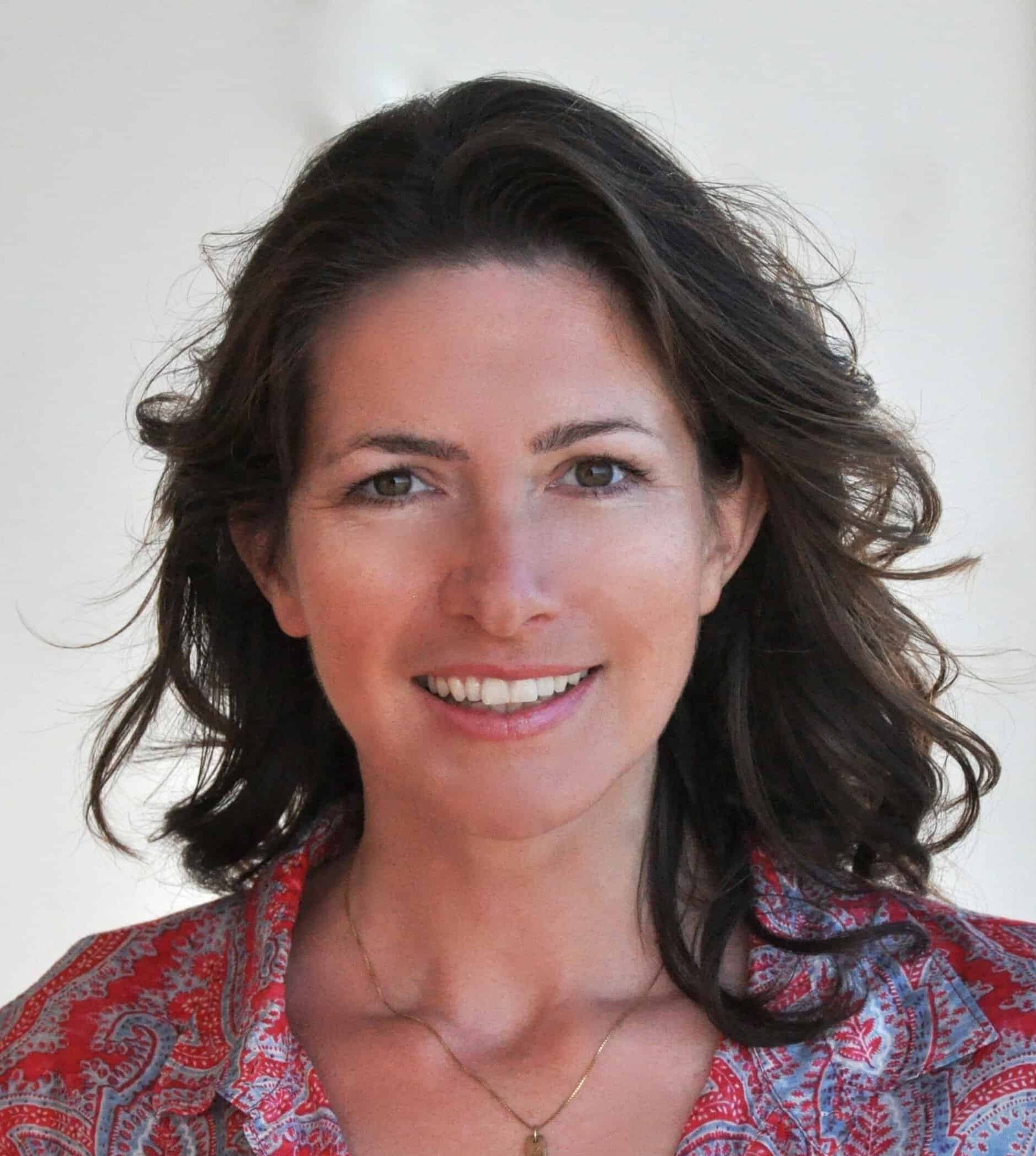In 2012, Marcella Hansch was enjoying a dive near North Africa’s Cape Verde archipelago when she was startled by a fish bumping into her leg. When she looked underwater, she saw that it wasn’t a fish, but a plastic bag — the sea was filled with them.
The experience stayed with her. “Ever since, I’ve been seeing the plastic problem everywhere — on the streets, in the supermarket, in my own kitchen,” she says via Zoom from her office in a converted clothes factory in Aachen, Germany. “I couldn’t look away anymore.”
She decided to tackle the most visible symptom of the issue: the Great Pacific Garbage Patch, where approximately 100 million tons of debris swirl in a Texas-sized area of the central North Pacific. The problem is massive and keeps growing: Every day, we dump about 350 tons of trash into the oceans, most of it plastic. How to deal with this problem has vexed scientists and activists for decades.
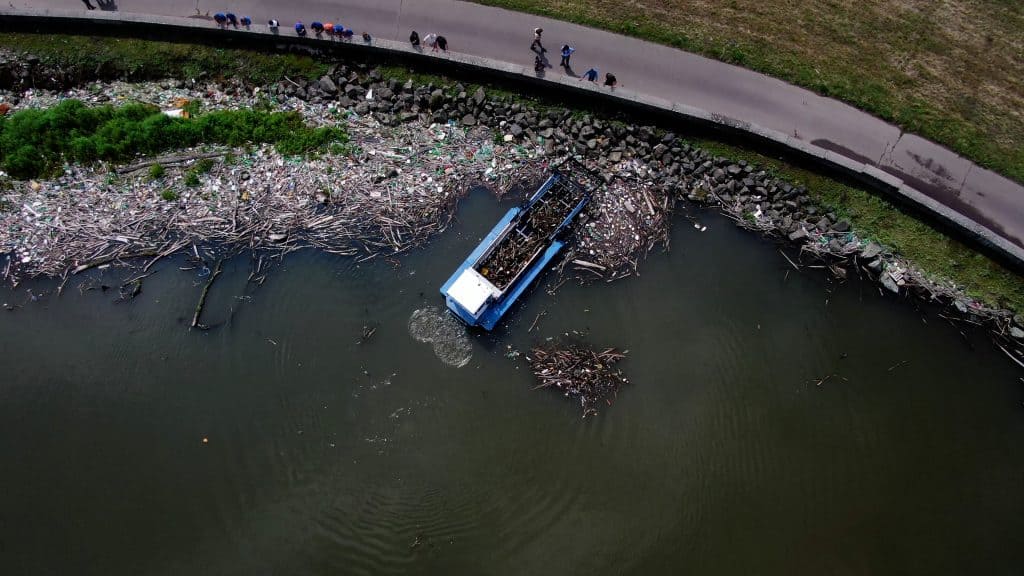
So, for her master’s thesis as an architecture student, Hansch didn’t design a building, but a spectacular floating white platform shaped like a manta ray. The structure stretched 400 meters wide with combs reaching 35 meters deep. Its purpose was to fish plastic debris out of the ocean and melt it aboard the craft, with the resulting energy propelling the platform. For her invention, Hansch earned international attention and, in 2016, the German government’s Ecodesign award.
Crushed by negative news?
Sign up for the Reasons to be Cheerful newsletter.But just like the similarly eye-catching Ocean Cleanup Project by the young Dutch engineer Boyan Slat, her project was criticized by environmental activists who feared that skimming the oceans for trash could do more harm than good. Greenpeace marine expert Thilo Maack told the German newspaper Die Welt, “Projects worth millions with surface collection ideas are spectacular and powerful, but unfortunately they do not solve the problem.” Marine biologists worried that ocean skimmers would inevitably extract living microorganisms such as plankton. And about 90 percent of trash has already sunk deeper than such devices can reach. What’s more, “Plastic in the ocean can hardly be recycled because it has already deteriorated,” learned the 35-year-old Hansch. “Experts told me, if you really want to make a difference, you’re too late when you go into the oceans. When your basement has flooded, you want to turn off the tap first before you mop up the floor.”
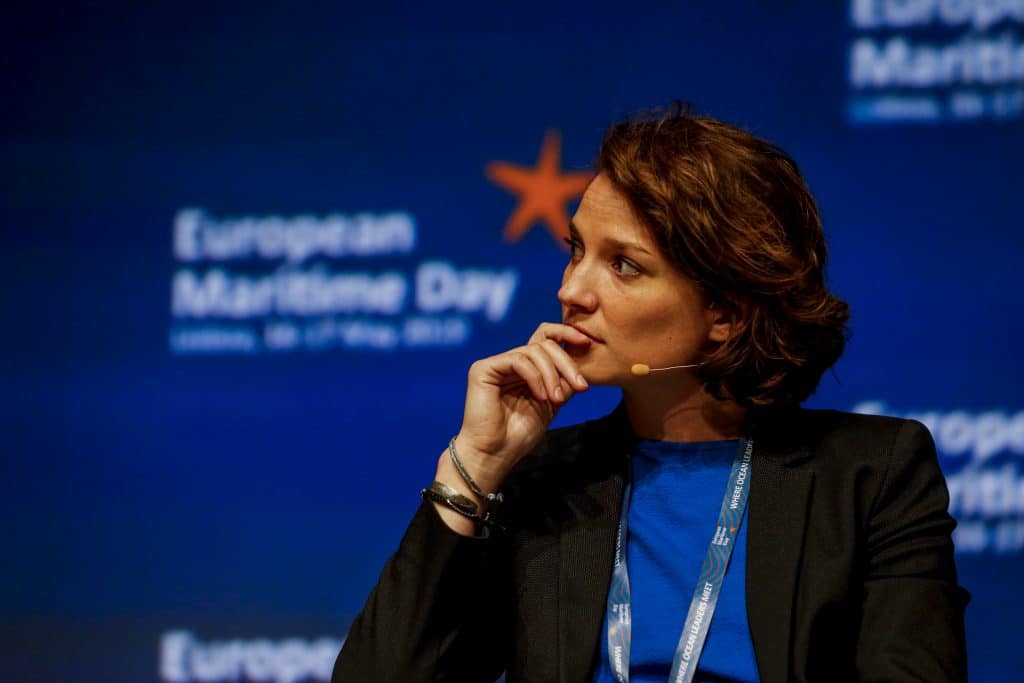
But Hansch wasn’t ready to give up. “I’m thick-headed,” she declares with a laugh. She researched where plastic cleanup could be a more feasible solution and found her answer in a different sort of water: rivers. “About 80 percent of trash reaches the oceans through the rivers,” she says. “They are basically the spigots that carry the debris into the seas.” Together with the biologist Tilman Peter Flöhr, who had already analyzed debris flows in the Chinese Yangtse and the Indian Ganges, and the journalist Clemens Feigl, she founded the everwave foundation in 2018.
In cooperation with the German boatmaker Berky, the trio designed and built specialized boats with a conveyor ramp that can skim up to 20 tons of trash per day from rivers and lakes — a less spectacular solution than the original concept, but arguably more effective.
“That is more useful for the solution than devoting yourself to the Herculean task of cleaning the ocean of plastic waste,” says Thilo Maack. For instance, a ten-day run in the German Danube this spring sponsored by the environmental foundation of automaker Audi yielded more than 7,000 pounds of pure plastic. After local test runs, the indigo blue CollectiX-boats had their first big deployments in Slovakia and at the Drina dam in Bosnia-Herzegovina, where vast patches of debris even shut down hydroelectric plants. “We go where we are needed the most,” Hansch explains. “Especially in the border regions, nobody feels responsible for the trash.” And when her home state in Northern Germany experienced catastrophic flooding in July, she quickly deployed one of her boats to help clear a nearby river of wood and debris.
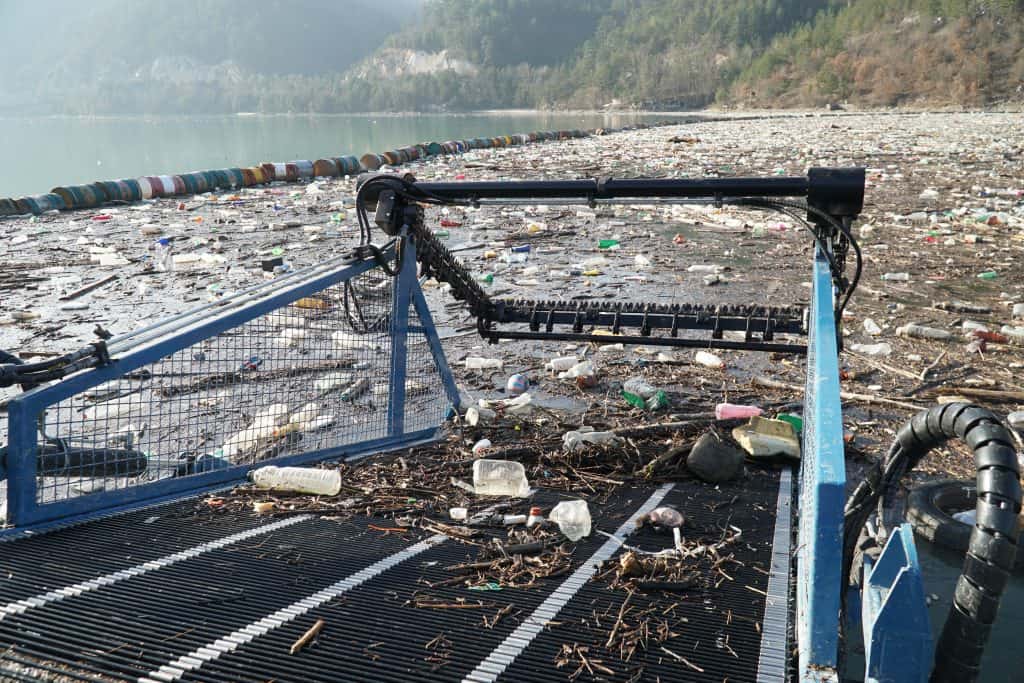
But her boats don’t just collect trash. Equipped with cameras, a drone and artificial intelligence (AI), the trash is analyzed by the German Research Center for Artificial Intelligence, one of the world’s largest nonprofit contract research institutes for AI technology. Employing the technology has two goals: First, it detects what can be recycled so that whatever is salvageable can be repurposed. And second, “We don’t just want to collect trash forever, but we want to plug the holes,” Hansch says. “We want to see where the biggest entry points and who the biggest polluters are.”
A team of engineers, biologists and environmental scientists help her. “Knowledge is power,” Hansch says. “We simply don’t know enough about trash, especially the plastic debris.” Everwave wants to inspire fundamental changes. “We see the same brand names in the trash again and again. We don’t want to wiggle our index finger at them, but when we publish pictures of our trash haul, it’s pretty obvious who the main culprits are. And people react to that; they will write to companies such as Coca-Cola and demand changes in their packaging. It also makes it pretty obvious that their recycling strategies aren’t working.”
Hansch gets upset when people tell her, “My to-go cup won’t make a difference.” She is convinced that “as consumers, we have enormous power to affect change. When consumers don’t buy that stuff, it won’t be produced.”
The focus on plastic waste has changed her own lifestyle as well. As a mother of a toddler, she doesn’t achieve “zero waste,” she confesses, “but we are extremely conscientious. You definitely won’t find a plastic bottle in our house.” She and her team also go into schools for education events and have designed a teaching children’s suitcase with age-appropriate materials about trash.
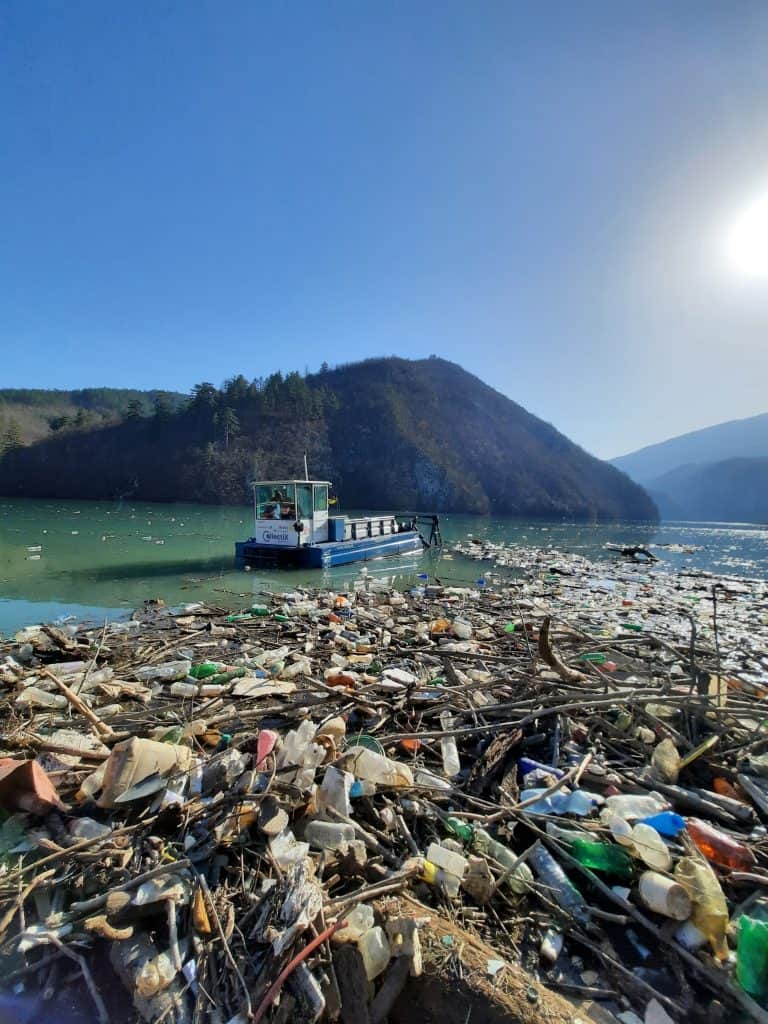
Everwave gets requests to clean up trash patches from all over the world, more than the small, donation-based organization with its 15 staff members can manage. “That’s why we’re focused on scaling up now,” Hansch emphasizes. She is planning deployments in sub-Saharan Africa and Asia next, especially Malaysia, Indonesia and India. “Not only because these are areas that leak a large percentage of the worldwide trash into the oceans, but also because we export a lot of our trash into these regions.” Boyan Slat, too, has refocused his cleanup work on the rivers and redesigned his original vision as a solar-powered barge-like system for rivers called the Interceptor. He has already deployed it to Indonesia and Malaysia.
To scale up, everwave is looking for investors. “Trash isn’t profitable,” Hansch says with a hint of sarcasm in her voice. “Even though everybody wants to market themselves as sustainable, at the end of the day, businesses prioritize profit.”
And yet, she is about to realize a mini-version of her original vision after all: This fall, honeycomb-shaped platforms the team designed will start anchoring in trash hotspots on rivers and lakes. Named HiveX, the platforms will be able to anchor long-term and collect trash without impacting ships. “We are constantly asked if we can come back or stay longer.” The boats and platforms are deliberately designed simply so they can be built locally in Africa, Asia, or Eastern Europe “so that we can create jobs for the local residents.” Hansch also hopes that they will double as awareness-raising devices “so that locals start seeing trash as a valuable commodity that can be recycled.”
Everwave wants to grow and make waves worldwide. But Hansch’s true vision is that her cleanup mission will not be needed one day: when all the trash spigots have been turned off.






